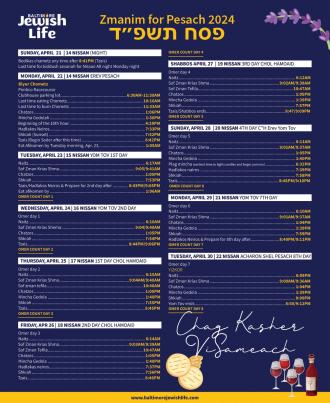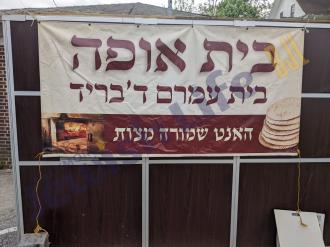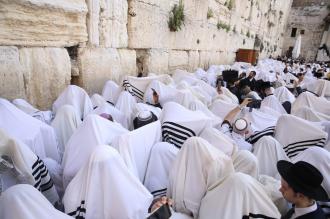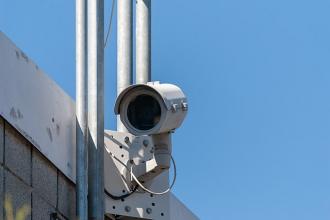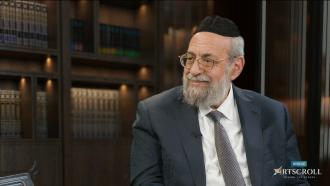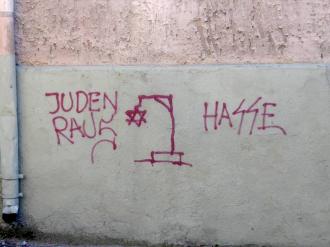Every element of the Mishkan was iconic- symbolizing an important aspect of religious experience. The holiest and, arguably most iconic, article was the Ark or Aron which housed the luchot as well as a Sefer Torah; the housing for the Torah highlighted by ornate gold and decorations symbolizes the majesty of the experience of Torah study.
On the one hand this golden Ark was recessed deep within the inaccessible inner sanctum-out of reach from the general public. It is too sacred to be regularly patted or even gawked at by commoners. Once a year the High Priest gazed at this Torah case. The embedded location preserves the Aron’s sanctity and establishes a tone of “exclusivity” to Torah study.
Ironically the construction of the Aron transmits a very different message. When describing the manufacture of the various components of the Mishkan, the Torah employs a singular tense: for example the construction of the Menorah is prefaced by the term V’asita- connoting manufacture by one person. In reality, the components were constructed by a team of artisans but ascribing the construction to a single person reflects management of this project by Bezalel- the chief project manager.
By contrast, the crafting of the Aron is prefaced with the plural verb of “V’asu”- which implies construction by multiple people. The midrash views this term as symbolic- as the Aron symbolizes Torah study, which is vital to all, everyone is urged to participate in the project. Of course, the same craftsmen fashioned the Aron under the “same” personal leadership of Bezalel. However, by framing the construction of the Aron with a plural term, the Torah invites, and, in fact desires, mass participation in the experience of Torah study.
This contrast showcases a fundamental question regarding Torah study. Should it be reserved for select individuals whose piety and scholarship will reflect the splendor and gravitas of Torah study? Or should it be extended as broadly as possible offering it to the masses? Of course, this question drove the opposing policies of Raban Gamliel and Rebbi Elazar ben Azaryah. When the former served as Rosh Yeshiva, he strictly limited access to the Beit Midrash; only those with integrity and without deceit were admitted. Rebbi Elazar Ben Azarya temporarily replaced Raban Gamliel and invited a broader population into the Torah halls. The ensuing stampede to study Torah required the addition of hundreds of benches. Rebbi Elazar ben Azarya’s decision to extend Torah to the masses appears to be validated by this dramatic uptick in interest and attendance.
In truth, this question regarding Torah study, arose three generations earlier within an interesting debate between Hillel and Shammai. The latter applied four conditions to the teaching of Torah: the student must be wise, wealthy, humble and pedigreed. Obviously, unintelligent people will distort Torah, arrogant people will self-aggrandize through it, poor people will pervert it for profit, and non-pedigreed will ignore its generational flow. Arguing with Shammai, Hillel claimed that Torah should be spread broadly since many sinners have been revitalized by the rehabilitative powers of Torah.
This perennial question regarding a more exclusive or more inclusive Torah experience has ebbed throughout the generations. This age-old dichotomy is already latent within the positioning of the Aron as opposed to the democratic tone of its construction. These two sentiments capture the different and sometimes opposing themes of Torah. Torah is cosmic and the source of all reality and the thought of life for a Jew without Torah is unimaginable. I remember Rav Lichtenstein tz”l’s reply to a student who questioned “Why should we study Torah…”. Rav Lichtenstein, normally very patient and restrained, immediately cut him off with the response “Why study Torah? Why breathe!?” If Torah is as basic to life as oxygen, it is unthinkable that it be reserved only for a select few.
Alternatively, Torah contains the coded word of G-d and unlike a straightforward book, it must be carefully deciphered and cautiously applied to a changing world. Entrusting this process with novices can severely compromise the timeless wisdom of Torah. Even if Torah is accurately interpreted, the sanctity of the Divine word must be upheld. Delivering this experience to immoral, dishonest or impious people compromises the presence of God in our world. It is the unique quality of Torah that is both basic to life and surpassing of life. It must be democratized but also preserved. It is the province of all and the protectorate of a select group. All this being said, admittedly, our masorah has ruled in favor of a more shared Torah experience – offering it to larger groups rather than more selected audiences.
Ove the past 70 years the Ashkenazic Orthodox world has witnessed a bit of a shift in this delicate balance. The unprecedented growth of the post-WWII yeshiva world has led to an incredible surge in Torah study. The resurgence of Torah study is especially remarkable so soon after the devastation of the Holocaust and especially within a modern world which strains religious passion.
It appears that this process has been fueled, in large part, by an internalization or insulation of Torah rather than a broad process of expansive. Two fateful but very similar decisions were taken by two different people in the aftermath of WWII. Rav Avraham Kahanamen and Rav Aharon Kotler - the architects of Ponivesh and Lakewood respectively- positioned their yeshivot far from the cultural centers of Yerushalayim and New York. They each sensed that, for Torah to flower, it should be protected from the rampant cultural influences of the “big city”. This decision wasn’t just geographic but shaped the evolution of the Yeshiva world for the past 70 years. On a theoretical level the phrase “Torah world” or “Torah velt” implies a separation of Torah and its students from the rest of the population. On a practical level, establishing a separate dress code or even a separate language (known to many as “yeshivesh”), reinforces the sense of separatism which has underwritten this phenomenon. Moreover, this separatism has created a rugged landscape in which those who don’t subscribe to the dictated cultural norms have a difficult time fitting in. The merits and deficiencies of this system can be debated, but it is clear that the phenomenal growth of Torah was advanced by positioning the “Aron” far from cultural access. Is it time to relocate the Aron and create a more integrated world of Torah study? Is this already occurring, and many are just ‘living behind the times’? Are different approaches suitable for Charedim in Israel as opposed to Yeshivesh people in Chutz La’aretz?

